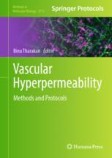Search
Search Results
-
Recovery of Recombinant Rotaviruses by Reverse Genetics
Rotaviruses are the primary cause of severe gastroenteritis in infants and young children throughout the world. To combat rotavirus illness, several...
-
Evaluation of Tight Junction Integrity in Brain Endothelial Cells Using Confocal Microscopy
The blood-brain barrier (BBB) is a highly complex and dynamic microvascular barrier that protects the brain parenchyma from the entry of pathogens,...
-
TCID50 Assay: A Simple Method to Determine Baculovirus Titer
There are many methods that can be used to determine the infectious titer of your baculovirus stock. The TCID50 method is a simple end-point dilution...
-
Generation of Oligodendrocytes from Human Pluripotent and Embryonic Stem Cells
Oligodendrocyte progenitor cells (OPCs) and mature oligodendrocytes (OLs) can be generated using human induced pluripotent stem cells (hiPSCs) and...
-
Directed Differentiation of Neurons from Human iPSCs for Modeling Neurological Disorders
Human-induced pluripotent stem cell (hiPSC) technology has enabled comprehensive human cell-based disease modeling in vitro. Due to limited...
-
Reverse Genetics of Bat Influenza A Viruses
New World fruit bats were recently found to harbor two distinct and previously unknown influenza A viruses (IAVs) of the subtypes H17N10 and H18N11....
-
Assessment of Invadopodium Formation and Gelatin Degradation in Vitro
Some cancer cells form highly regulated structures, termed invadopodia, which mediate local, enzymatic degradation of extracellular matrix and...
-
Isolation and Culture of Human Umbilical Vein Endothelial Cells (HUVECs)
This protocol describes a simple and an economical method for isolation of endothelial cells from human umbilical vein. Umbilical cord is easily...
-
Quick Method to Assess Non-mutagenic Carcinogens with iPS Cells
Carcinogenesis refers to a complex multistage process in which normal cells transform into cancer cells. The transformation will happen in a number...
-
Troubleshooting of Mammalian Cell Culture
Physiologically, healthy culture of cells is the basic need of present mammalian cell culture. During mammalian cell culture, the engaged laboratory...
-
Generating Homogeneous Brain Organoids from Human iPSCs
There is a high demand for the development of in vitro models for human brain development and diseases due to the inaccessibility of human brain...
-
Generation of Radioresistant Prostate Cancer Cells
The development of in vitro isogenic models of radioresistance through exposure to fractionated radiation is an increasingly used approach to...
-
Generation and Characterization of an Isogenic Cell Line Model of Radioresistant Esophageal Adenocarcinoma
Radiation therapy is a cornerstone of cancer treatment worldwide. Unfortunately, in many cases, it does not control tumor growth, and many tumors...
-
Skeletal Muscle Satellite Cell Physiology and Function: Complimentary In Vitro and In Vivo Models and Methods
Skeletal muscle is a highly adaptable tissue, displaying features of hypertrophy (growth) and atrophy (loss), as a result of both internal and...
-
Studying Virus-Host Interactions with CRISPR Technology
The mosquito-borne West Nile virus (WNV) poses a great threat to public health as no vaccine or specific antiviral treatment is available. Exploring...
-
Culture of Continuous Cell Lines
This chapter describes the culture of various continuous cell lines. Continuous cell lines are generated either due to specific genetic or epigenetic...
-
Preclinical Mouse Metastatic Model Established Through Induced Lung Metastases
Metastatic disease is the major cause of cancer death, and the lung is one of the most common sites of cancer metastases. To investigate systemic...
-
A Stable Reverse Genetics System of Zika Virus Based on a Self-Splicing Group II Intron
Zika virus (ZIKV) is a mosquito-borne flavivirus of the Flaviviridae family first isolated from a sentinel monkey in the Zika Forest, Uganda, in...
-
Isolation of Extracellular Vesicles Using Formulas to Adapt Centrifugation to Different Centrifuges
Extracellular vesicles (EVs) are small lipid bilayer vesicles released by cells to facilitate cell-to-cell communication. To study their biological...
-
Analysis of ICAM-1 Expression on Bladder Carcinoma Cell Lines and Infectivity and Oncolysis by Coxsackie Virus A21
Oncolytic viruses are biological agents which can easily be delivered at high doses directly to the bladder through a catheter (intravesical), with...
